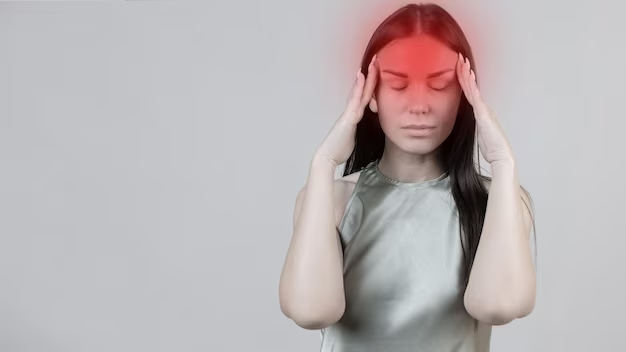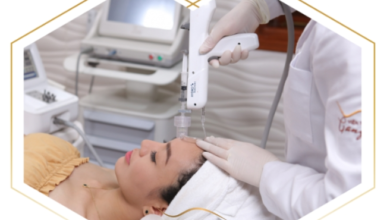Beyond the Pain: Empowering Yourself with Successful Migraine Treatment Methods

Migraines are not just severe headaches; they are complex neurological disorders that can cause debilitating symptoms such as intense pain, nausea, vomiting, and sensitivity to light and sound. For those who suffer from migraines, finding effective treatment methods is essential for managing symptoms and improving quality of life. In this guide, we’ll look at different ways of migraine treatment effectively which helping people regain control and find relief from the pain
Understanding Migraines
Before delving into treatment methods, it’s important to understand what migraines are and how they differ from regular headaches. Migraines are neurological in nature and are often characterized by throbbing or pulsating pain on one side of the head, although they can affect both sides. Other common symptoms of migraines include:
- Sensitivity to light, sound, and smells
- Nausea and vomiting
- Aura (visual disturbances such as flashing lights or blind spots)
- Tingling or numbness in the face or extremities
Migraines can vary in frequency and severity, with some individuals experiencing occasional attacks and others experiencing chronic, debilitating migraines that significantly impact daily life.
Successful Migraine Treatment Methods
Managing migraines often requires a combination of lifestyle changes, preventive measures, and acute treatments to reduce the frequency and severity of attacks. Here are some successful migraine treatment methods that individuals can explore:
1. Lifestyle Modifications
Making lifestyle changes can help reduce the frequency and severity of migraines. Some helpful modifications include:
- Maintaining a regular sleep schedule: Getting an adequate amount of sleep and sticking to a consistent sleep schedule can help prevent migraines triggered by changes in sleep patterns.
- Eating a balanced diet: Avoiding migraine-triggering foods such as processed meats, aged cheeses, and artificial sweeteners, and staying hydrated can help prevent migraines.
- Managing stress: Practicing relaxation techniques such as deep breathing, meditation, or yoga can help reduce stress levels and decrease the likelihood of migraine attacks.
2. Preventive Medications
For individuals who experience frequent or severe migraines, preventive medications may be prescribed to reduce the frequency and severity of attacks. These medications may include:
- Beta-blockers: Medications such as propranolol or metoprolol, typically used to treat high blood pressure, can help prevent migraines by regulating blood flow and reducing the frequency of attacks.
- Antidepressants: Certain antidepressant medications, such as amitriptyline or venlafaxine, may be prescribed to prevent migraines by altering neurotransmitter levels in the brain.
- Anti-seizure medications: Drugs such as topiramate or valproate may be prescribed to prevent migraines by stabilizing electrical activity in the brain.
3. Acute Treatments
When a migraine attack occurs, acute treatments can help alleviate symptoms and provide relief. These treatments may include:
- Over-the-counter pain relievers: Nonprescription medications such as ibuprofen, acetaminophen, or aspirin may help relieve mild to moderate migraine pain when taken at the onset of an attack.
- Triptans: Prescription medications such as sumatriptan or rizatriptan are specifically designed to target migraine pain and associated symptoms by constricting blood vessels in the brain and blocking pain pathways.
- Anti-nausea medications: Medications such as metoclopramide or promethazine may be prescribed to relieve nausea and vomiting associated with migraines.
4. Biofeedback and Relaxation Techniques
Biofeedback and relaxation techniques can help individuals learn to control physiological responses to stress and tension, which can trigger migraines. Techniques such as deep breathing, progressive muscle relaxation, or guided imagery can help reduce the frequency and severity of migraine attacks.
5. Botox Injections
For individuals with chronic migraines (defined as experiencing 15 or more headache days per month, with at least eight of those being migraines), Botox injections may be an effective treatment option. Botox injections work by blocking the release of neurotransmitters involved in pain signaling, thereby reducing the frequency and severity of migraines.
Empowering Yourself with Successful Migraine Treatment Methods
Living with migraines can be challenging, but it’s important to remember that effective treatment methods are available to help manage symptoms and improve quality of life. By taking an active role in your treatment plan and exploring a variety of successful migraine treatment methods, you can empower yourself to take control of your condition and find relief from the pain.
Remember to work closely with your healthcare provider to develop a personalized treatment plan tailored to your specific needs and goals. With dedication, perseverance, and the right support, you can move beyond the pain of migraines and embrace a life filled with vitality and well-being.
Conclusion
Living with migraines can be challenging, but by exploring successful treatment methods and empowering yourself to take control of your condition, you can find relief from the pain and improve your overall quality of life. Whether you’re making lifestyle modifications, exploring preventive medications, or seeking acute treatments for migraine attacks, remember that you are not alone on this journey. With the support of healthcare professionals, friends, and family members, you can navigate beyond the pain of migraines and embrace a life filled with vitality and well-being.



